Nintendo
Mario & Luigi: Brothership - the return of a very special series
Nintendo’s favorite brothers return with their signature touch in this RPG.
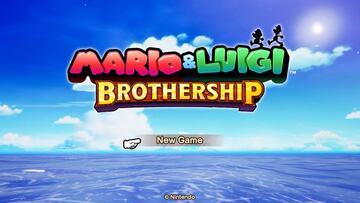
Since the closure of the AlphaDream studio in 2019, the idea of a new Mario & Luigi installment seemed unthinkable. The franchise, which began in 2003 with Superstar Saga for GBA, managed to turn Nintendo’s favorite brothers into the heroes of an exceptional RPG. With five titles and two remasters, the franchise was characterized by its simple but endearing humor and simple mechanics that well conveyed the idea of using two very different characters. Its style was very distinctive, very different from that of the Plumber’s other RPG franchise, Paper Mario. That’s why it was such a surprise when, in June of this year, the return of this franchise was announced, taking us away from the Mushroom Kingdom, this time for an adventure along Concordia.
Reunifing Concordia
Mario & Luigi: Brothership is an RPG in which the two Nintendo plumbers are the main heroes of this adventure. After being transported by a mysterious lightning bolt, Mario and Luigi appear on Shipshape Isle, an island that resembles a ship. Here they meet Connie, a plug-faced girl who is trying to save Concordia, a continent that has broken up after an incident and is floating in a huge ocean. This will not be an easy task, as they must find these drifting islands and connect them to the Uni-Tree, the central tree of Shipshape Island. In this world where everyone has a plug face and everything is connected to electricity, the brothers will have to do what they do best: save the day.
Within Shipshape Isle, we will be able to move along the different currents of Concordia’s oceans. With a special telescope, we will be able to look for the islands that are in our path, and it will be through a cannon that we will launch ourselves to each of our new destinations. Each island we visit has a different theme. There are islands where artists and businessmen (who do not pay overtime) live, jungle islands or deserts, and even theme parks. There are many biomes to discover, each with its own identity. Although the islands are not huge, there is a lot to do and discover, although in the end the same mechanic is fulfilled: reach your huge lighthouse and connect it to the Shipshape Island, which throughout the game will be filled with the inhabitants of Concordia, adding life and shops to the place.
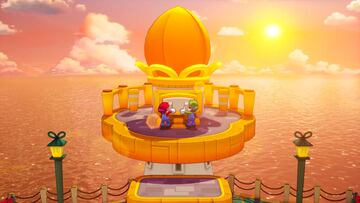
The design of many of them is like a maze, which makes them seem a little bigger than they are. Also, as you gain skills, there will be some backtracking to go back and try to find all the items the island has to offer. This is where I have to make my first complaint, as the initial pacing of the game is slow. The first few islands serve as a long tutorial on moves, puzzles, combat and so on. However, I also have to say that after overcoming this bumpy start, the rest of the adventure goes into a crescendo.
The essence of the franchise is the use of Mario and Luigi as characters who perform their activities together and separately. From solving puzzles that require the brothers to work together, to throwing objects at each other to get them from one place to another, to special platforming elements and rhythmic elements. Throughout the game, the story gives our characters new abilities, from the classic jump to hammers, to the abilities that the brothers can perform together, known as Bros. Moves. The latter are essential for solving the game’s puzzles and discovering areas and objects in each of the scenarios.
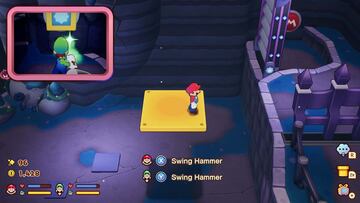
Battle full of skill
Combat in Mario & Luigi: Brothership maintains the style that has defined the franchise for over 20 years: Mario uses the A Button, while Luigi uses the B Button. Much like their abilities in the outside world, our characters add moves to their arsenal, and each one involves both brothers working together to increase the momentum of their attack.
Each fight has its own rhythm, either to attack or to defend. It is necessary to pay attention to the screen and to press the above-mentioned keys correctly to ensure that the blow is accurate or, in the case of defense, to dodge it at the right moment. In some moments, the reaction must be immediate, because the game is also based on the patterns of each enemy. Sometimes it is necessary to learn certain patterns to avoid being damaged in battle, but some enemies always try to deceive you about their intentions, so you have to be very attentive to what is happening on the screen.
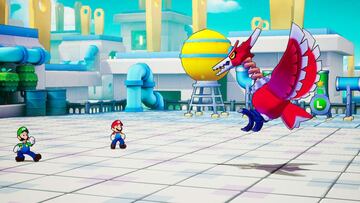
Another element that makes combat in Mario & Luigi: Brothership interesting is the Battle Plugs. These objects grant extra abilities or attack enhancements against our enemies, making them a dynamic element of combat. To create them, you need to find enough Lumenade on the islands you visit. Mario and Luigi are facing a group of enemies, and there are also flying characters? The combination of anti-air damage and a damage attack on surrounding enemies seems like a combo that could make things easier. On the other hand, are there enemies that get complicated to defend or counter? There is a Battle Plug for that. There’s a lot of variety in the amount of these elements, and it adds a lot of variety to the combat, especially when you can change it in the middle of a fight. Of course, the way they wear out and recharge means that sometimes the Battle Plug you use may not be ready for the next battle.
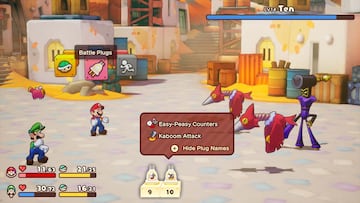
Visually, Mario & Luigi: Brotherhood takes a big leap into the 3D world. At first, I didn’t like some elements of the art style, especially those of the protagonists, but as time went on, this became less of an issue. The game runs quite well on Nintendo Switch, but we must also accept that there are times when the console is not able to keep everything stable, with frame drops and a loading time for combat that, while not excessive, becomes noticeable.
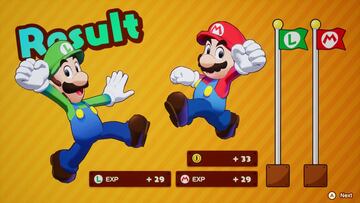
Mario & Luigi: Brothership brings back one of Nintendo’s most unique franchises. While it has elements that make the first few hours of gameplay feel tedious, there is a reward after that hurdle. Despite its simple core, the game is filled with challenges that aren’t so simple and demand the player’s attention. It’s a great year for RPGs, and while it may not be at the same level as those, it’s good to have this franchise back.